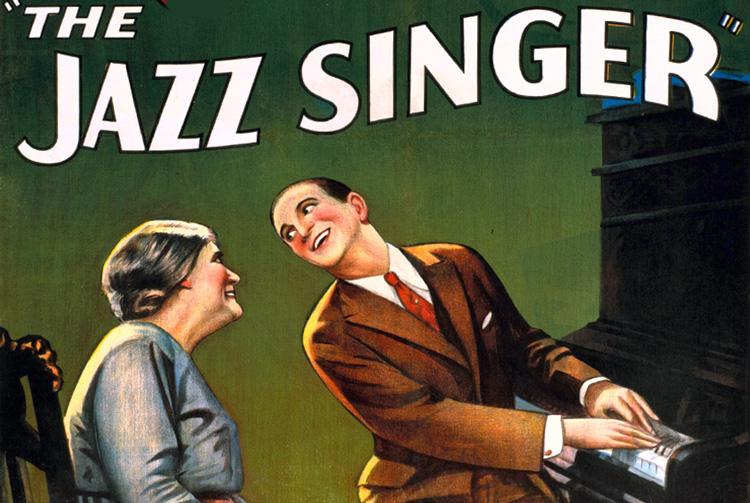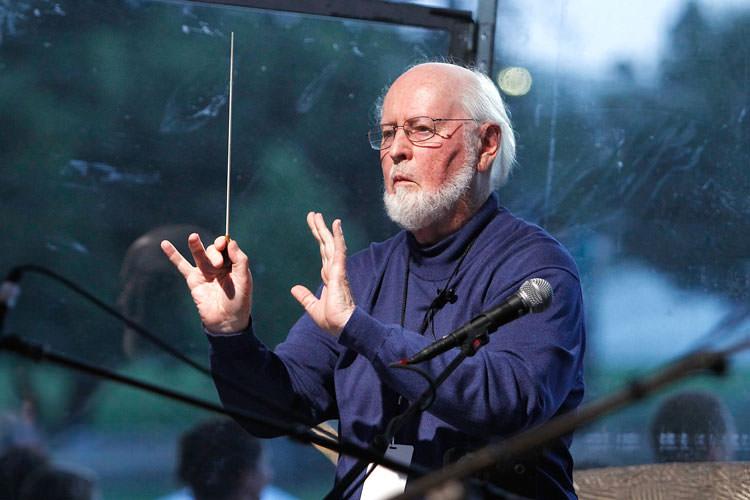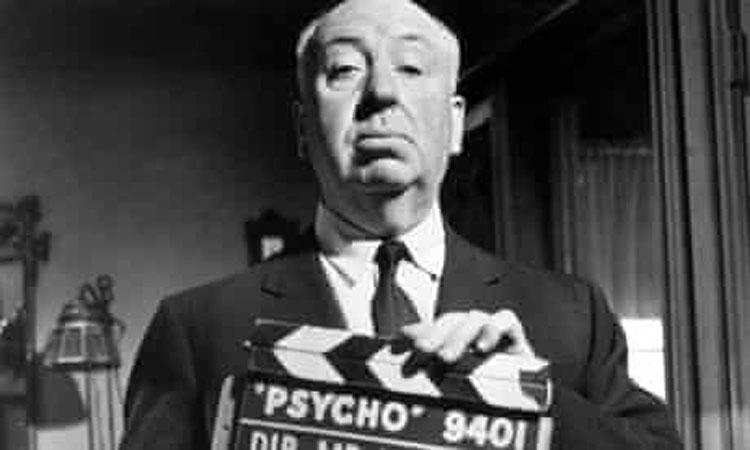The Powerful Role of Music in Cinema
''To me, movies and music go hand in hand. When I'm writing a script, one of the first things I do is find the music I'm going to play for the opening sequence'' Quentin Tarantino
Introduction
Imagine watching your favourite movies without a trace of music. How would you feel if you saw only images and nothing else? Undoubtedly, music plays a decisive role in the art of cinema. It gives life to the story. It is an integral part of cinematic narration. But, how did this relationship between sound and image start?
The early years of music in cinema
Throughout the centuries, music was present in society and every art form, from religious ceremonies to theatre and epic poetry. The latest accompanying genre of music is film music and it is regarded as a genre separate from the rest. The idea of combining motion pictures with sound is as old as the invention of cinema itself. Both are key ingredients for creating a movie. According to Albert Einstein, although these two elements are in ''oppositional conflict'' with each other, they still unite and influence each other. In the early 1890s, the first efforts to synchronize image and sound had been undertaken, unfortunately without results. However, efforts continued, as there were several important reasons that made the use of music in films necessary. One of the main reasons was to understand the plot through music and to provoke strong emotions to the viewer. Moreover, music became necessary for an even more practical reason, as it covered noise heard from the street, as well as noises in the room itself (e.g. The sound of the projector of the film). So, in 1892 Charles-Emile Reynaud created the first animated film called ''Pantomimes Lumineuses''. The screening of the film took place in Paris. The music that accompanied this film was composed for the piano by Gaston Paulin and played live to the audience as they watched it. For 35 years (1892-1927) the cinema was silent and films were almost always accompanied by live music, which was necessary. More specifically, the Lumière brothers used pianists or orchestras in their first films (1895-1896), who played either original themes based on improvisation or familiar themes from classical music or from popular songs of that time, which were adapted to the movie scenes.

In the beginning, the film music was used either to accompany the plot or to emphasize the quality characteristics of a scene. In addition, the music provided sound effects and balanced the absence of dialogue. The aim of music was to make the visual effect more intense and understandable to the film viewer and touch his inner world. The existence of music in silent cinema led to the discovery of new paths in terms of musical listening.
The evolution of sound technology and film music
Undoubtedly, the history of music in cinema was shaped by the important technological development of audiovisual media for reception and projection. In the 1920s, two big companies, Fox and Warner Bros contributed to the emergence of sound film. Both companies invested in audio recorders. As it was possible to record, mount and include sound in the film, synchronized with the image, the same had to be done with the music. However, this was very difficult and expensive, because the actors had to be in the studio day and night to record their voices with the whole orchestra. Nevertheless, over the years technology has evolved greatly and the music has been upgraded to give its own, unique stigma to each film. Music themes, which were taken from well-known melodies and songs, were also replaced by original compositions. It is worth noting that the first effort to write and play music for the cinema was the ''cue sheets'', which were a guide, a tool for the musician to know exactly what to play and in what way and style. With ''cue sheets'', the musician knew exactly what musical theme had to be played according to the evolution of the movie scene or the use of a timer. A disadvantage of this technique was perhaps that there wasn't coordination and internal rhythm. The music gave the impression to the film viewer that it didn't follow the movements of the actor. A typical example is the movie ''The Battleship Potemkin'' (1925). Since then, filmmakers have tried to solve this problem of synchronization with devices. In 1926, we observe the existence of recorded cinematic sound. More specifically, the Warner Bros company introduce the Vitaphone device, which provided the ability to play music. This was possible through a disc, which was synchronized with the film projector. The first film based on this innovation was ''The Jazz Singer'', which was shot in 1972 in the United States and was a great success.

The aim of each work of art isn't only the aesthetic, but it must also support its content (the dialectic unity of form and content)1. Music isn't only included in the cinematic environment, but also carries out important narrative functions. According to Wingstedt (2005) there are the following six functions of musical narration:
- The emotive function: where music can communicate emotive qualities.
- The informative function: where music expresses or explains phenomena or events by communicating information on a cognitive rather than on an emotional level.
- The descriptive function: where music is actively (or programmatically) describing something rather than more passively representing certain values. It is usually a matter of describing the physical world.
- The guiding function: where included musical functions that turn directly to the audience in order to ''direct'' the eye, mind and thought. This function is prominent in advertising and computer games
-The temporal function: where music can provide continuity and define structure and form
-The rhetorical function: where music sometimes ''steps forward'' to comment the narrative events or situation. This function often achieved by having the musical expression contrast the visuals or by referring to well-known musical material.
Music also has the ability to express untold thoughts as well as the invisible implications that underlie the drama. To achieve this some techniques are used. The most common technique is the ''Leitmotif''. Leitmotif is a term derived from German and translated means ''guiding motif''. It is a melody or a musical idea that symbolizes a person, space, idea, thought or divine intervention. Everytime we hear this melody, we understand that it is the same thing. The ''Leitmotif'' is a technical characteristic of Wagner's operas, but is also used in cinema. A typical example is the popular music written by the talented composer John Williams for the world famous movie ''Star Wars''.

The characteristic ''Imperial March'' ( or ''Darth Vader's theme'') is recognizable from the first few seconds and is repeated throughout the duration of the film. This melody is the musical theme of Darth Vader and accompanies him every time he appears or when his presence is implied. It is military music, reminiscent of the style of Richard Wagner. Ennio Morricone was the first to elevate the technique of leitmotif in cinema. This genious composer, used characteristic melodies that are widely known, in order to accompany the protagonists. in his trilogy ''A Fistful of Dollars'' (1964), '' For a Few Dollars More'' (1965), and ''The Good, the Bad and the Ugly'' (1966).
![]()
Film music has also different functions and one of these is to contribute to the development of a scene. Another function is to have a specific music piece, which will represent the respective movie. In addition, a basic function of music is to add commentary in order to provide additional information to the viewer. A prerequisite for all the above is for the music be consistent with the content, the time period and the historical context of the film. Undoubtedly, some features, such as melody, harmony and sudden change of music tone, enrich the film and prove that music can significantly influence viewer's interpretation. Music interacts with the narration and provides information, which the viewer processes and is led to emotional content. Therefore, a very important power of music is that it can affect emotion greatly. So, inside a film, the soundtrack contains not only the film score, but environmental sounds, dialogues, sound effects and even silence. Yes, silence, because as Manos Hadjidakis had said: ''This is how the film music was born. From silence. This music was, in the beginning, a little darkness, titles, sound description of a dream, act of life and death, energy, victory, way out and return home''. The complex union of these sounds becomes a complicated form of musical communication that could be considered as ''music, which coexists harmoniously with the image''.
Film music as a source of emotion
According to studies music influences the general mental state of man and enriches his emotional world. Specifically on the subject of music in cinema, Martin Scorsese said: ''Music and film are inseparable. They always have been and always will be''. In cinema the combination of sound and image evokes certain emotions in viewers at certain times. This can be observed, for example, at a moment in a film, when the music comes to the fore and can be intense and loud or impactful. This is when the viewer's emotions change and he feels anxiety, fear or anticipation whilst awaiting an expected or unexpected event. The different elements that exist in music, such as melody and rhythm, are directly related to the role of music in cinema, as they can affect the emotional reaction of the viewer. A typical example is Alfred Hitchcock's emblematic film ''Psycho'' (1960) and the most recognizable music composed by Bernard Hermann. Screeching violin heard during the famous shower scene has remained in the history of film music, enchancing the fear and anxiety of viewers. Undoubtedly, it is still the most perceived and suspenseful music. So, can you imagine Alfred Hitchcock's Psycho shower scene without the sound of screeching violins?

It is clear that music is one of the most powerful tools in a movie, because it motivates the audience to participate with the characters in the film. In addition, music can't be appreciated without the image it was written for. It is so closely related to it and so complementary that it seems incomplete without it. Sergio Leone's wonderful westerns wouldn't have had such great success without Ennio Morricone's unique music. Unusual colors and harmonies, the characteristic whistling and human voices are some of the elements of Ennio Morricone's music. In the Spaghetti Western film ''The Good, the Bad and the Ugly'', Morricone uses the main music theme to introduce all three main characters, but he uses different orchestration for each character. The Good is accompanied by a flute, the Bad by an argilolofono (a folk instrument), whilst the Ugly is accompanied by human voices imitating the coyote's howl. In this way, the music has the role of narration.
Music and emotions influence each other and there can't be one without the other. It is a powerful combination that engages the audience and gives them an opportunity to live an experience. Film music and emotion are a team in which all human senses and thoughts are actively involved. It is understood that if we were to separate the music from the film, the result wouldn't be the same and it wouldn't be a lived experience. Music follows the emotional and physical journey that goes through the different stages of life. However, it retains something that remains unchanged from beginning to end. The authentic. The source of life. Film music is a key that unlocks the magical world of the seventh art. With the first note of the melody, our mind is flooded with images from our favourite movie.
Conclusion
Unlike cinema, music gives the realism that cinema breaks by creating a fake world. The role of music in cinema is vital in the meaning of narrative. There is no movie without music. Movies wouldn't be movies without music. Music is their voice. It is the way to communicate deeply with the viewer and to express things which are often impossible to express through image and words. Music is the soul of the film. Even the most indifferent scenes, can be turned into the most interesting, through music. Therefore, we could argue that cinema cannot attract the world without music. Without music, it might already have died. ''The film music preserves and interprets in the memory the image, whilst at the same time it colors desires, memories and our personal identification with the aspects of a 35mm dream'' (M. Hadjidakis). Feel this magic of music, through the Radio Art's channel ''Film Scores''. Draw beautiful pictures in your mind. Imagine that your life is a movie in which you are the protagonist. Accompany it with your own musical experience. So, close your eyes and begin the long beautiful journey into the world of music and image.
Our website respects the intellectual property rights of creators, as well as the music rights of authors and composers.
The musical works are provided solely for the private use of each visitor/user
and any further exploitation of them in any way is prohibited without prior permission from AUTODIA and EDEM Rights.
Radio Art is fully approved by the Greek Collective Rights Organizations | AUTODIA | EDEM Rights
Copyright © RABS - Radio Art Broadcasting services Ltd. All rights reserved.
The Art of Relaxing & Meditation Music
Privacy Policy & TOS








